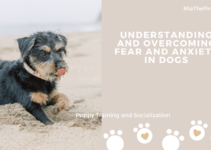The Teething Process in Dogs: What to Expect
Teething is a natural process that all puppies go through. It typically begins when they are around 3 to 4 months old and can last up to 6 months. During this time, your furry friend will start losing their baby teeth and growing their adult teeth.
As the new teeth emerge, you may notice your puppy experiencing some discomfort. They may exhibit behaviors like increased chewing, drooling, and irritability. It’s important to understand the signs and symptoms of teething to ensure your puppy’s comfort and well-being.
Signs and Symptoms of Teething in Puppies
Teething can be a challenging phase for both puppies and their owners. It’s essential to recognize the signs and symptoms to provide appropriate care and support. Some common indications that your puppy is teething include:
- Excessive chewing on objects and furniture
- Bleeding or swollen gums
- Loss of appetite
- Whining or whimpering
- Bad breath
If you notice any of these signs, it’s crucial to address your puppy’s discomfort and manage their teething effectively.
Managing Teething Discomfort: Tips and Techniques
When your puppy is teething, there are several strategies you can employ to alleviate their discomfort and prevent destructive chewing. Here are some helpful tips:
- Provide appropriate teething toys and chews to redirect their chewing behavior
- Keep your puppy engaged with interactive toys and puzzles
- Use frozen treats or ice cubes to soothe their sore gums
- Offer gentle massages to relieve teething pain
- Ensure a balanced diet with proper nutrition to support healthy teeth development
By implementing these techniques, you can help your puppy navigate the teething process more comfortably and minimize any potential damage to your belongings.
Essential Training During the Teething Stage
The teething stage is an ideal time to introduce essential training to your puppy. It’s crucial to establish good habits and teach them appropriate behavior. Here are some key training tips:
- Start with basic commands such as sit, stay, and come
- Use positive reinforcement techniques like treats and praise
- Redirect inappropriate chewing behavior to designated toys
- Establish a consistent routine for feeding, potty breaks, and exercise
- Enroll in puppy training classes to enhance socialization and obedience skills
Training during the teething stage sets the foundation for a well-behaved and disciplined adult dog. Be patient, consistent, and understanding while teaching your puppy.
Socialization plays a vital role in shaping your puppy’s behavior and temperament. It helps them become confident, well-adjusted dogs who can interact positively with humans and other animals. Here are some strategies for effective socialization:
- Expose your puppy to various environments, sounds, and experiences
- Introduce them to different people, including children and seniors
- Arrange playdates with other vaccinated and friendly dogs
- Enroll in puppy socialization classes to facilitate controlled interactions
- Reward and praise your puppy for calm and appropriate behavior
By socializing your puppy during the teething stage, you are setting them up for a lifetime of positive social interactions and reducing the likelihood of behavioral issues.
Teething Toys and Chews: Choosing the Right Options
Providing appropriate teething toys and chews is essential to redirect your puppy’s chewing behavior and alleviate discomfort. When selecting these items, consider the following:
- Choose toys specifically designed for teething puppies
- Opt for durable and non-toxic materials to ensure safety
- Select toys with different textures to massage their gums
- Consider size and shape suitable for your puppy’s breed
- Rotate toys to keep them engaged and prevent boredom
By offering a variety of teething toys and chews, you can satisfy your puppy’s natural urge to chew while protecting your belongings.
Understanding teething in dogs and implementing appropriate training and socialization techniques during this stage is crucial for your puppy’s development. By recognizing the signs, managing discomfort, and providing the right tools, you can ensure a smooth teething process and set the foundation for a happy and well-adjusted adult dog.
FAQs
1. What are the signs and symptoms of teething in puppies?
Some signs and symptoms of teething in puppies include excessive chewing, bleeding or swollen gums, loss of appetite, whining or whimpering, and bad breath.
2. How can I manage my puppy’s teething discomfort?
You can manage your puppy’s teething discomfort by providing appropriate teething toys and chews, keeping them engaged with interactive toys and puzzles, using frozen treats or ice cubes to soothe their sore gums, offering gentle massages to relieve teething pain, and ensuring a balanced diet with proper nutrition for healthy teeth development.
3. What essential training should I focus on during the teething stage?
During the teething stage, it is important to start with basic commands such as sit, stay, and come, use positive reinforcement techniques like treats and praise, redirect inappropriate chewing behavior to designated toys, establish a consistent routine for feeding, potty breaks, and exercise, and consider enrolling in puppy training classes to enhance socialization and obedience skills.
4. Why is socializing my puppy important during the teething stage?
Socializing your puppy during the teething stage helps shape their behavior and temperament. It allows them to become confident, well-adjusted dogs who can interact positively with humans and other animals.
5. How do I choose the right teething toys and chews for my puppy?
When choosing teething toys and chews, it is important to choose toys specifically designed for teething puppies, opt for durable and non-toxic materials, select toys with different textures to massage their gums, consider the size and shape suitable for your puppy’s breed, and rotate toys to keep them engaged and prevent boredom.

